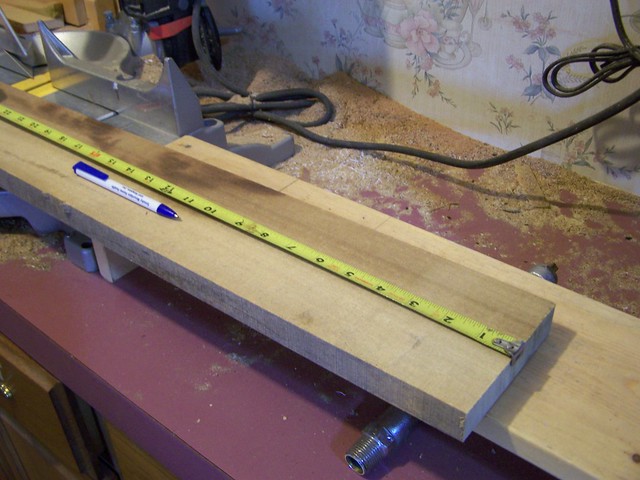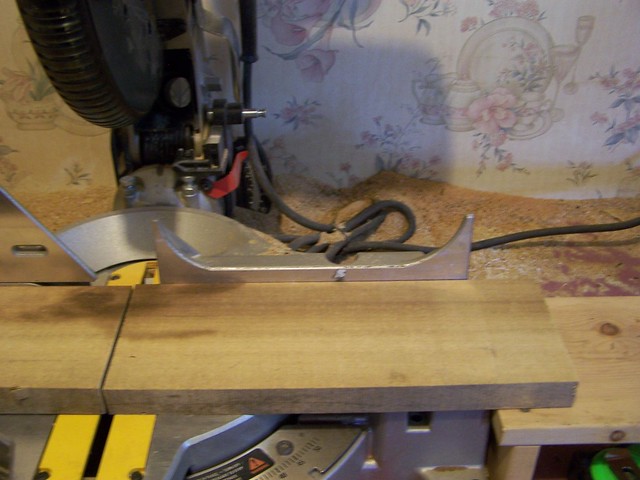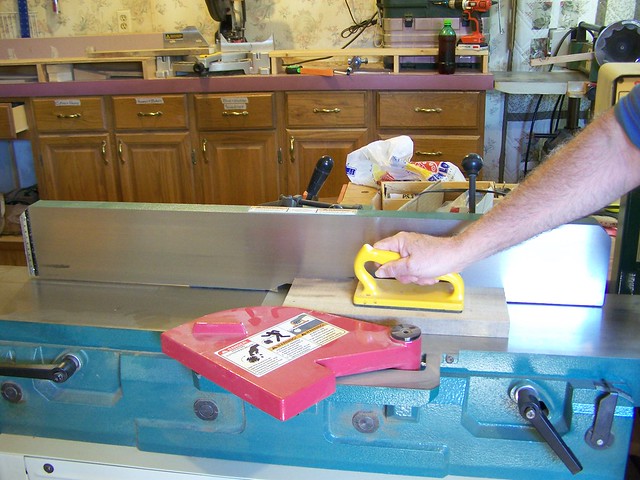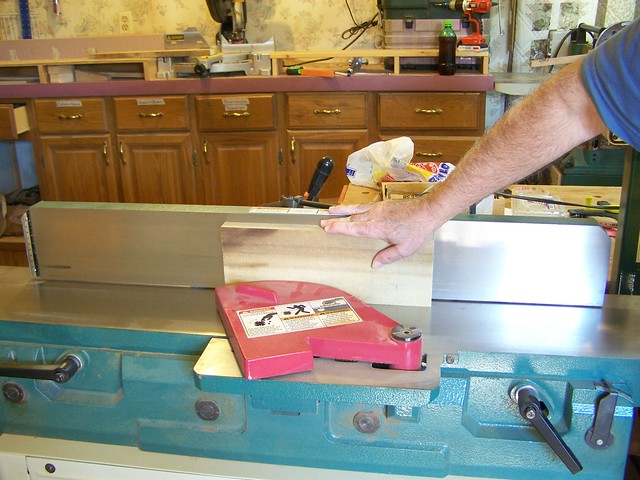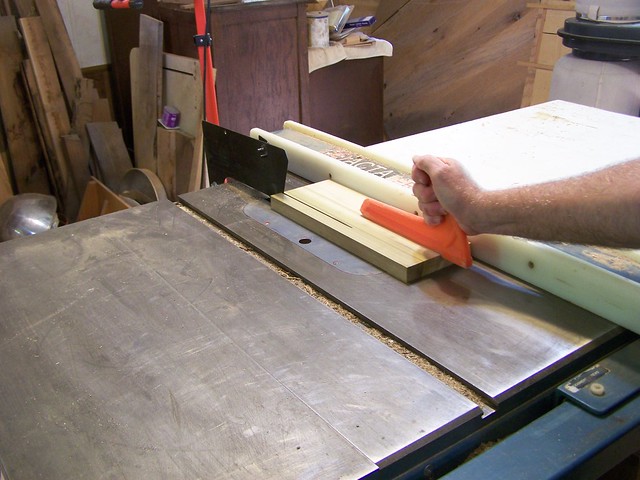If you want to try this project yourself, order your hardware first. You will need to have it on hand to establish diameters of the connecting tenons.

I start by selecting a thick slab of hickory; one that has some interesting grain to it, but not twisted or sideways; we need the grain to run the length of the cane. Sideways grain would create a snap hazard.
I like hickory because it is very hard (resists dings), very strong (not likely to snap even if you lean heavily on it), and because it’s beautiful stuff. However, the same interlocked grain that makes it so strong makes it very difficult to turn on a lathe and the hardness of the wood makes it a bear to sand. Tradeoffs.
I cut the slab to a generous rough length, joint one face and one edge – just to get them straight. Because I’m going to turn the thing round, getting it square to start with is of no importance at all, but having it straight is helpful. Then I cut the other two sides on the table saw.
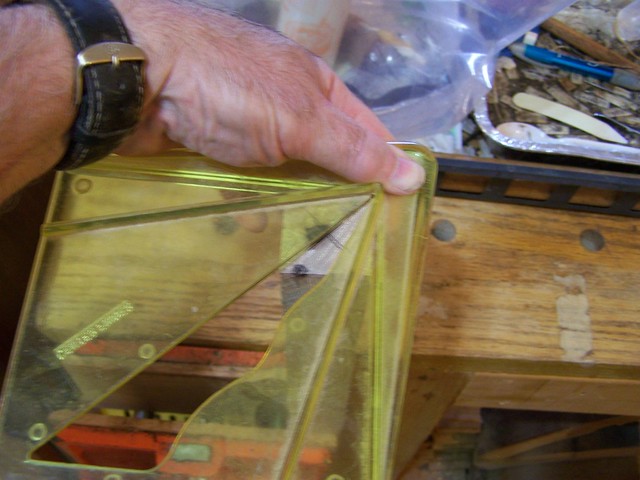
Using a center finder I locate and mark the centers of each end of the blank. If you’re using a pen or pencil, strike your marks from all four corners and use the tiny square in the middle of the four as your center.

Dimple the center with a punch, then drive your lathe’s spur into the end of your blank with a mallet. Drive it in far enough to get tooth gouges for a firm grip. This may be difficult in a wood like hickory, softer woods, not so much.

As I mentioned, turning hickory is difficult because the grain is interlocked and pieces tend to tear off rather than shearing off. Those big ol’ square corners especially so. To give me an easier time of it, I use round-over bits in the router table to remove the bulk of the edges, making the blank almost round to start with.
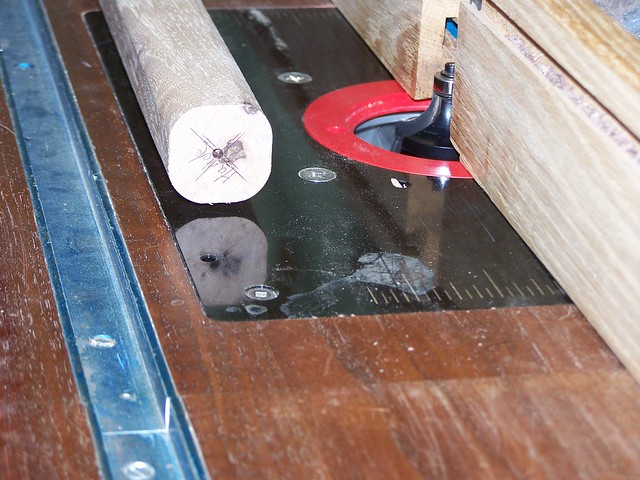
It takes two passes with ¼” radius and ½” radius bits to avoid tearing out the wood with the bits.
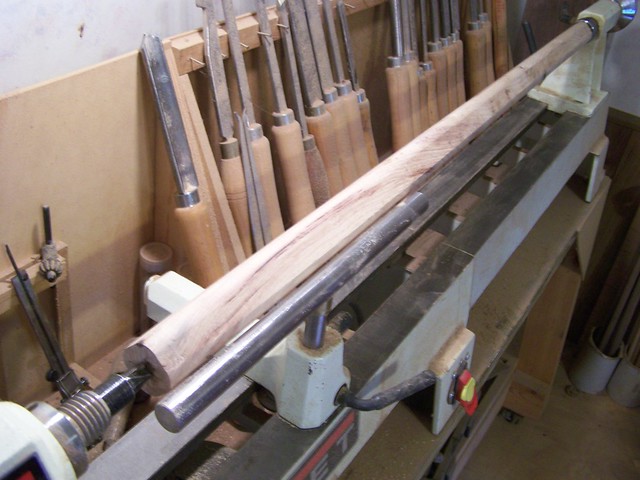
Now mount your blank in your lathe and install a long tool rest. There are two big challenges in turning a cane; one of those is that you need to turn a long smooth taper from one end to the other. This is harder to do freehand than you might think. And doubly so if all you’ve got is the 6” tool rest that came with your lathe. You will want at LEAST a 12” tool rest to work at smoothing your taper.
Read the rest...
